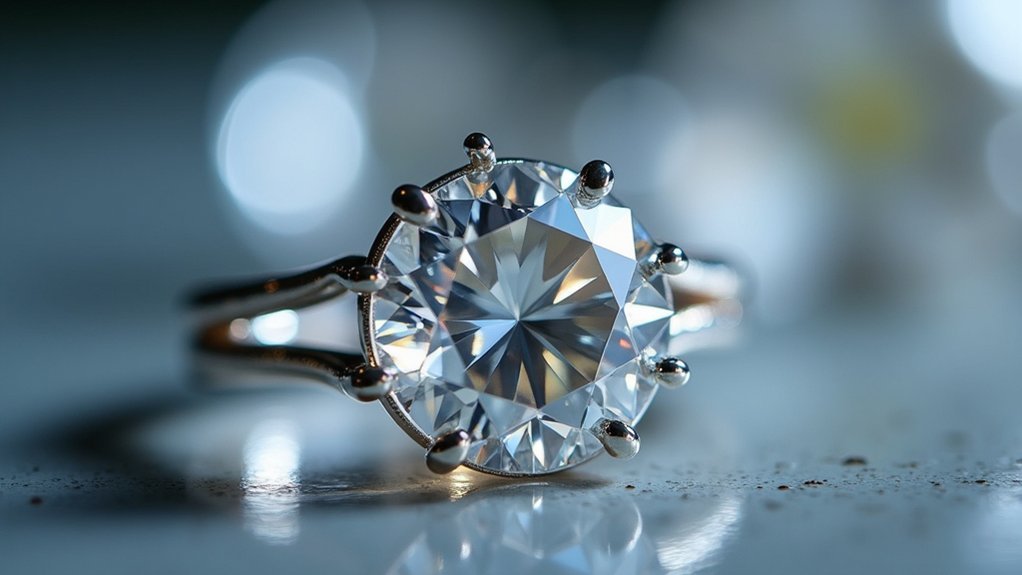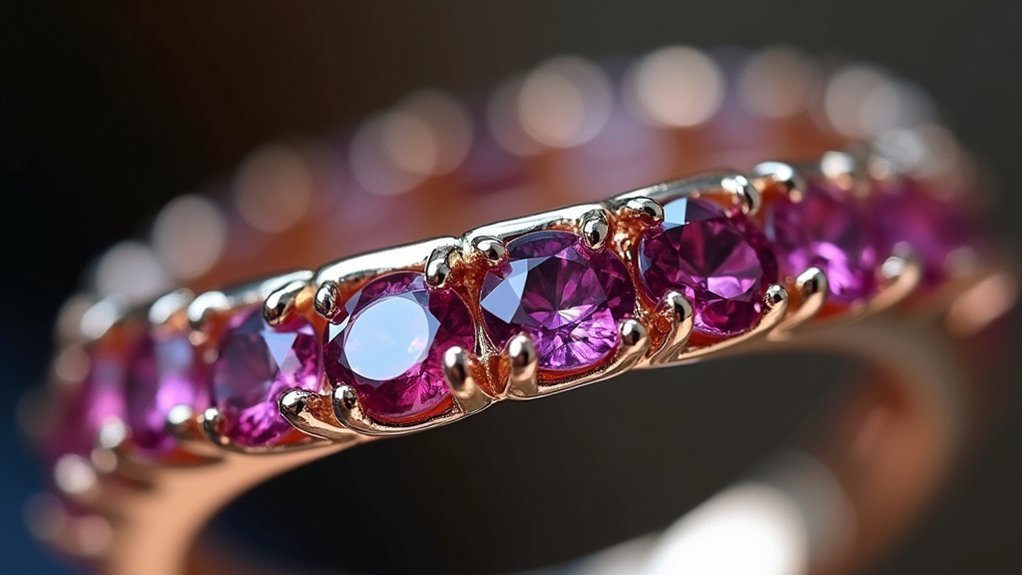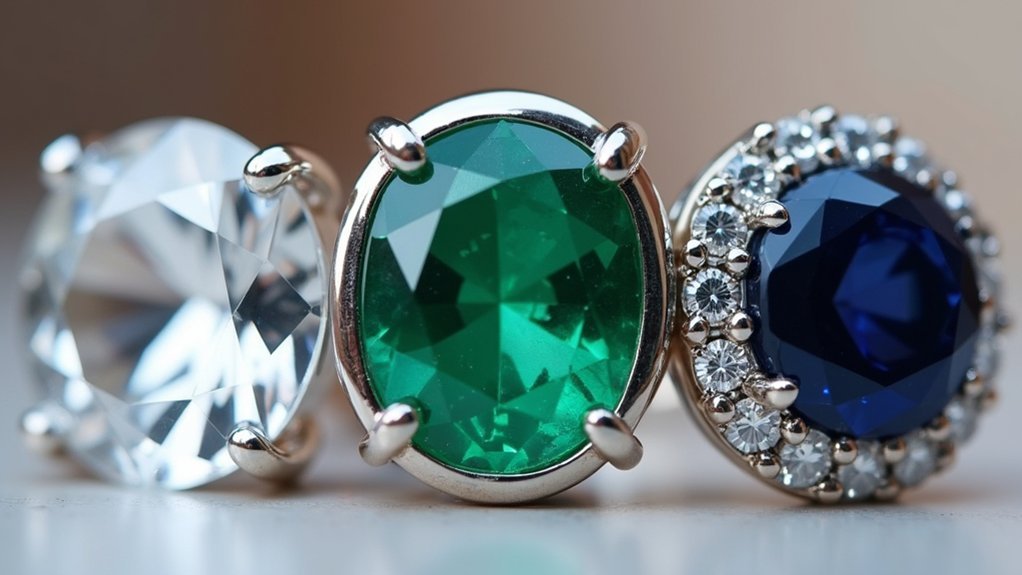You’ll master three essential stone setting techniques for perfect gems: prong settings that use four to six metal claws to maximize light exposure and brilliance, bezel settings that wrap metal strips around stones for unmatched protection, and channel settings that create seamless rows within parallel tracks for modern aesthetics. Each method offers unique advantages—prongs highlight gemstone beauty, bezels protect fragile stones, and channels deliver elegant floating effects. Explore these techniques further to transform your jewelry crafting skills.
Prong Setting for Maximum Light and Brilliance

Elegance meets functionality in prong setting, the most popular method jewelers use to secure gemstones in jewelry pieces.
You’ll find four to six metal prongs cradling your stone, providing maximum light exposure that enhances brilliance and showcases your gemstone’s beauty. This technique’s particularly perfect for solitaire engagement rings, where you want the stone to take center stage.
You’ll love how prong settings maximize the visibility of the gemstone, though this means you’ll need to choose durable stones like diamonds to prevent damage.
The design requires regular maintenance since prongs experience wear and tear from daily activities. You should check periodically that prongs haven’t bent or loosened, ensuring they continue to secure gemstones properly while maintaining that stunning sparkle you desire.
Bezel Setting for Secure Stone Protection
While prong settings prioritize brilliance, bezel setting offers unmatched protection by wrapping a thin metal strip around your gemstone’s perimeter. This technique provides a secure grip that’s perfect for fragile stones like opals, preventing edge damage during daily wear.
You can choose between a full bezel that completely surrounds your stone or a partial bezel for varied aesthetics. The metal thickness should measure 0.25 to 0.35 mm to eliminate rattling while maintaining proper fit. This versatile jewelry technique works excellently in rings, pendants, and bracelets.
After positioning your stone, you’ll use a burnisher to polish the bezel, creating a smooth finish. This final step guarantees ideal stone protection while delivering professional results that combine security with sophisticated design.
Channel Setting for Continuous Gemstone Display

Channel setting creates a seamless row of gemstones by placing them side-by-side within parallel metal tracks, eliminating the need for individual prongs or bezels between stones. This technique works exceptionally well with uniformly shaped gems like baguettes and round cuts, allowing maximum light exposure that enhances brilliance.
The enclosed metal edges provide excellent durability, protecting your gemstones from daily wear while maintaining their position securely.
You’ll need precise measurements and skilled craftsmanship to guarantee stones fit snugly without movement.
Channel setting delivers a modern aesthetic that’s particularly striking in eternity bands and tennis bracelets. The technique creates an elegant floating effect where gemstones appear suspended within the metal framework, making your jewelry visually stunning while maintaining structural integrity.
Frequently Asked Questions
What Is the Best Stone Setting?
You’ll find there’s no single best stone setting since it depends on your gemstone type and desired look. Prong settings maximize diamond brilliance, while bezel settings protect softer stones like opals effectively.
What Are the 4 C’s of Gemstones?
You’ll evaluate gemstones using four criteria: Cut determines brilliance and sparkle, Color measures hue intensity, Clarity assesses internal flaws, and Carat indicates weight. These factors determine your gemstone’s overall quality and value.
What Are the Different Gem Setting Styles?
You’ll find five main gem setting styles: prong settings use metal claws for maximum brilliance, bezel settings offer protective metal rims, channel settings create seamless rows, invisible settings hide frameworks, and cluster settings group multiple stones.
What Is the Most Secure Gemstone Setting?
You’ll find bezel settings offer the most security for your gemstones. They surround stones with protective metal rims, shielding edges from damage while minimizing risks that come with exposed prongs or complex mechanisms.
In Summary
You’ve now learned three fundamental stone setting techniques that’ll transform your jewelry designs. Whether you’re prioritizing brilliance with prong settings, seeking maximum protection through bezel settings, or creating stunning continuous displays with channel settings, you’ve got the knowledge to choose wisely. Each technique serves different purposes, so consider your gemstone’s needs and your design vision. With practice, you’ll master these settings and create breathtaking pieces that showcase your gems perfectly.





Leave a Reply